Case 3 Correspondence: Considering Your Reader’s Point of View
Case 3
Correspondence
Considering Your Reader’s Point of View
The Situation
Axel Geirsson, an accomplished adventurer who has twice reached the summit of Mount Everest, recently moved to the United States and opened a small climbing and outdoor specialty shop in Boulder, Colorado. Onward & Upward Outfitters is focused on providing climbing enthusiasts with high-quality outdoor gear and apparel. It boasts an extensive selection of climbing hardware, harnesses, ropes, slings, helmets, and footwear. The store is staffed by an extremely knowledgeable team, yet Axel has noticed that his staff has some difficulty explaining technical concepts to customers who do not have extensive outdoor or climbing experience. “My staff from time to time gets caught up in the enthusiasm of helping customers prepare for outdoor adventures and assumes that customers already know the basics when, in fact, many do not,” Axel says. Consequently, some customers leave the store believing they know how to use their new equipment properly, only to be stranded miles from a mobile-phone signal, sometimes in the middle of the night or during a thunderstorm.
The staff’s occasional misjudgment of their customers’ background knowledge has generated a few complaints. The staff can successfully address the concerns of those customers who return to the store or call to report a problem. However, customers who email or send a letter do not always get an effective response. Some disgruntled customers have begun posting critical comments on popular outdoor blogs and on microblogging sites like Facebook and Twitter. Rather than resolving customer problems, the store’s correspondence merely generates more problems. As a result, Axel has hired a public relations firm, which has assigned you, a communications consultant at the firm, to help Axel improve his store’s correspondence.
The Challenge
This case requires that you put yourself in the reader’s shoes. Consider how a reader would respond to the content, design, and tone of the correspondence. Likewise, this case requires you to think about the purpose of each piece of correspondence: what does the writer want his or her reader to know, do, or believe as a result of reading the response? You must then find the best strategy for achieving the writer’s purpose.
Your Job

To download electronic copies of documents in this chapter, click here.
Although the staff at Onward & Upward Outfitters are expert climbers, they need your assistance improving their company’s correspondence so they can provide better customer service. You are asked to use your background in communication to analyze correspondence surrounding a particular rain gear product sold by Onward & Upward Outfitters. You may be asked to do the following:
- Evaluate and revise the company’s internal memo.
- Examine a customer’s claim letter, and revise the corresponding adjustment letter.
- Respond to two claim letters.
- Write one to three microblog posts and a blog post addressing a common customer complaint.
Your instructor will tell you which of the tasks you are to complete.
You can view case documents at the bottom of each task below. To download copies of the documents that you can work with, click here.
Task 1 Evaluate and Revise an Internal Memo
A few months ago, Onward & Upward Outfitters began selling lightweight rain gear featuring a new thin, waterproof, breathable layer of fabric called H2O Pro-TechT. A few customers have complained that the rain gear seems to leak. “I really don’t think the fabric is defective. It’s just that our customers are not being properly educated about what they can expect from H2O Pro-TechT or how to care for the fabric,” Axel explains. He has addressed the situation by drafting a memo to store personnel (Document 3.2) stating the store’s policy regarding H2O Pro-TechT apparel. Evaluate the effectiveness of Axel’s draft, and then revise it. Write Axel an email in which you justify your revisions, and attach your revised memo for his review. Axel also encourages you to improve the design of his draft.
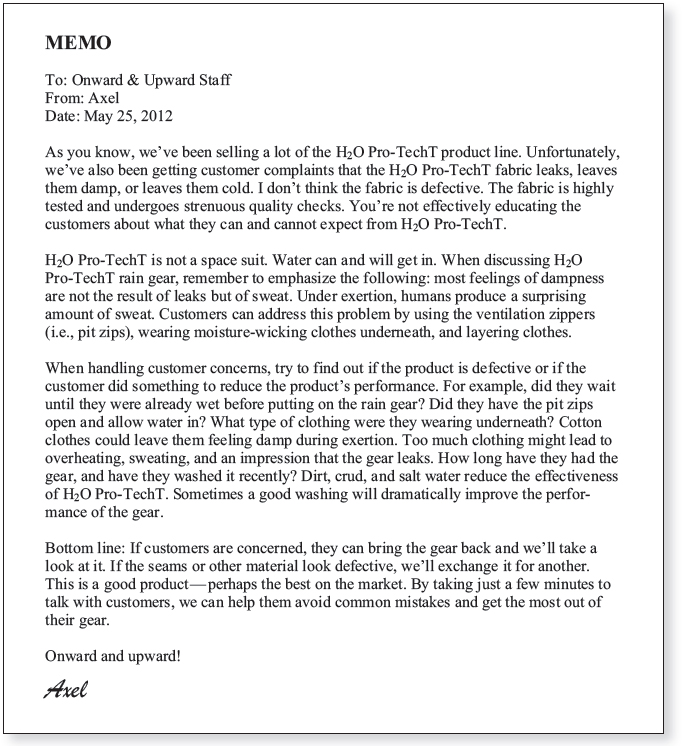
Task 2 Evaluate and Revise a Response to a Customer
Onward & Upward Outfitters recently received a complaint (Document 3.3) from a customer who had purchased H2O Pro-TechT rain gear. The sales specialist who originally helped the customer volunteered to write a response (Document 3.4). Before mailing the response, Axel has asked you to examine the correspondence and report to him on the effectiveness of his staff member’s response. Study the claim and adjustment letters. Does the claim letter seem polite, reasonable, and specific? Is the response fair and reasonable? Revise the response letter. Write Axel an email in which you justify your revisions, and attach your revised response for his review.
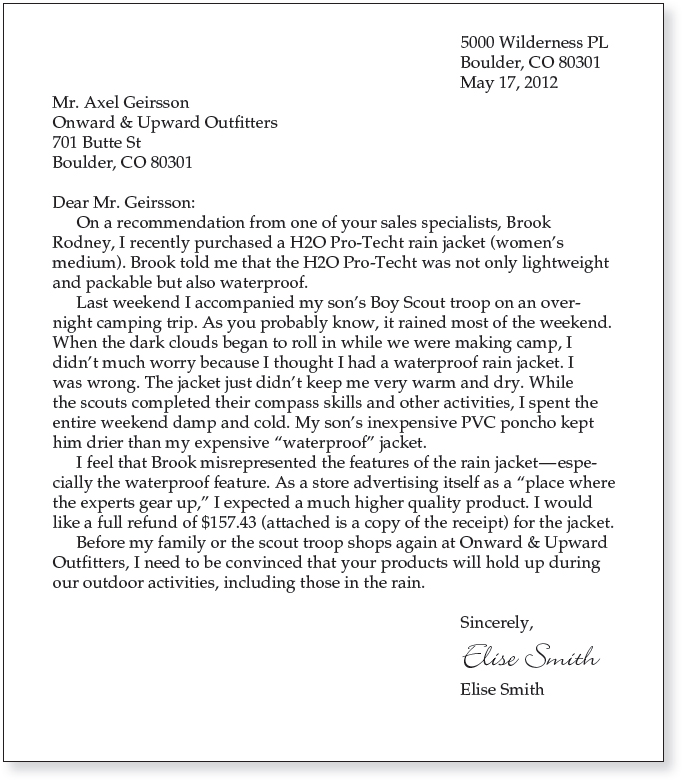
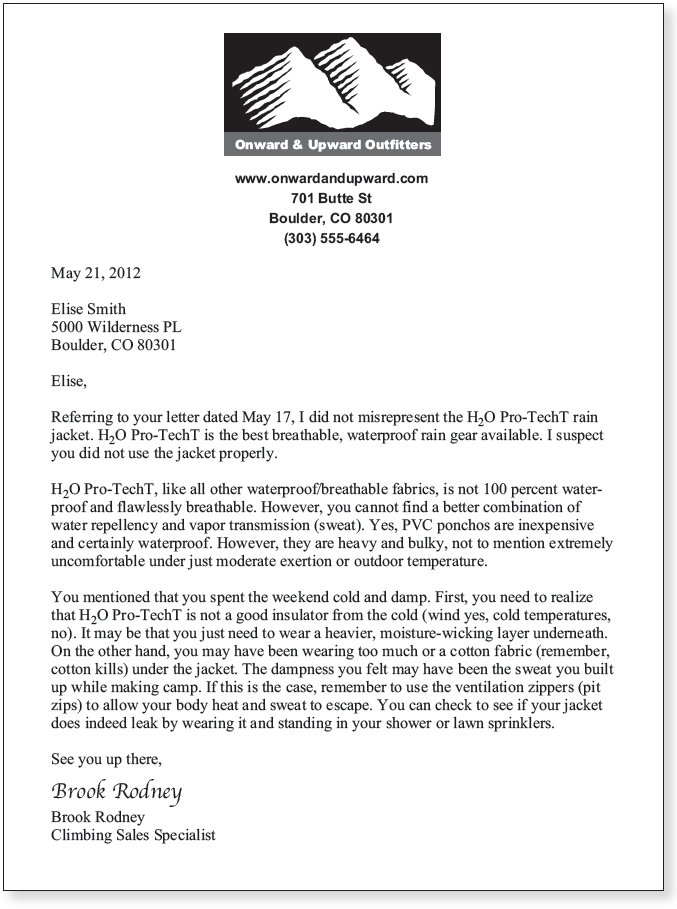
Task 3 Respond to Customer Claims
Axel received two emails over a holiday weekend regarding H2O Pro-TechT apparel sold at his store. Write an email denying the request made in the first message (Document 3.5), and write another granting the request in the second message (Document 3.6).
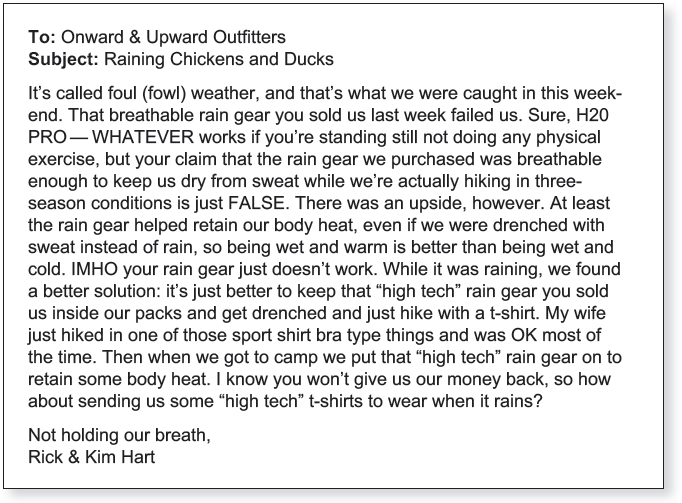
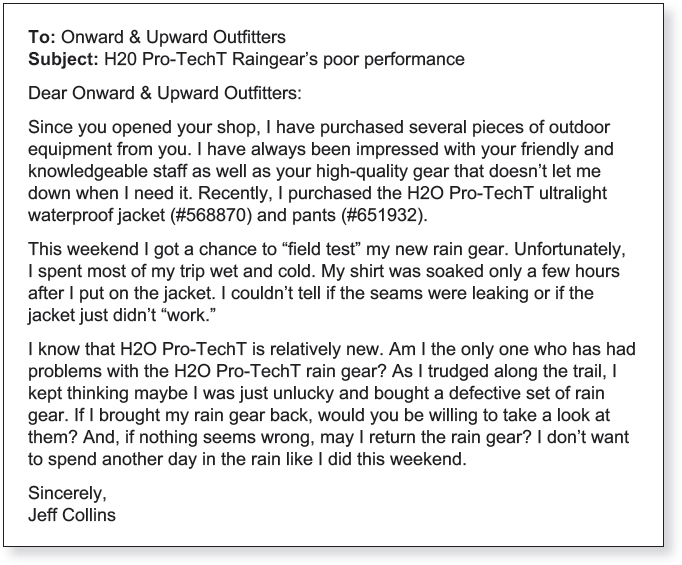
Task 4 Write Microblogs and a Blog Post
Axel shows you his internal memo on the H2O Pro-TechT product line (Document 3.2) as well as recent customer complaints (Documents 3.3, 3.5, and 3.6). He also shows you copies of a few microblog comments from customers (Document 3.7) and a blog post (Document 3.8) from a local climber critical of the store and the product. Axel sighs. Recently, the store has established an online presence with a blog and a microblogging site, and Axel would like your help addressing this customer issue using these Web 2.0 tools. “I’d like you to draft one to three microblog posts, no more than 140 characters each, and a longer blog post of about 300 to 500 words. Although I want these to respond specifically to the concerns raised about our H2O Pro-TechT line of clothing, I also want to make a strong statement about our overall commitment to our customers. We need to build relationships with customers and establish a positive presence in the blogosphere.”
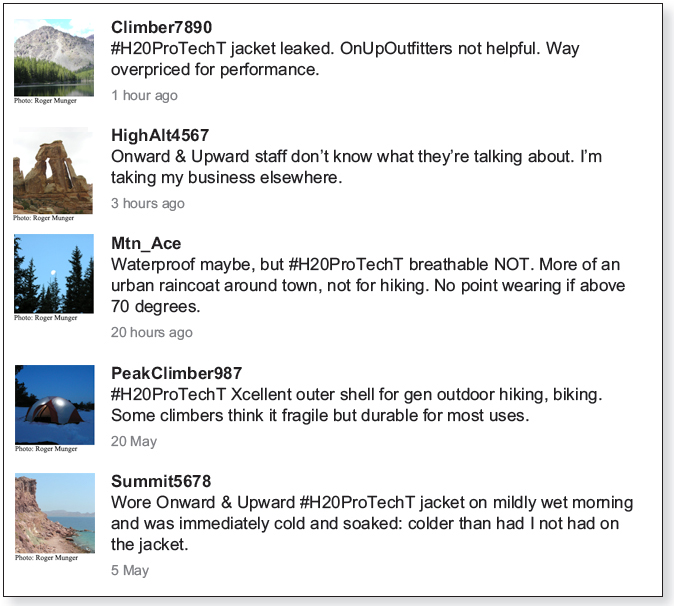
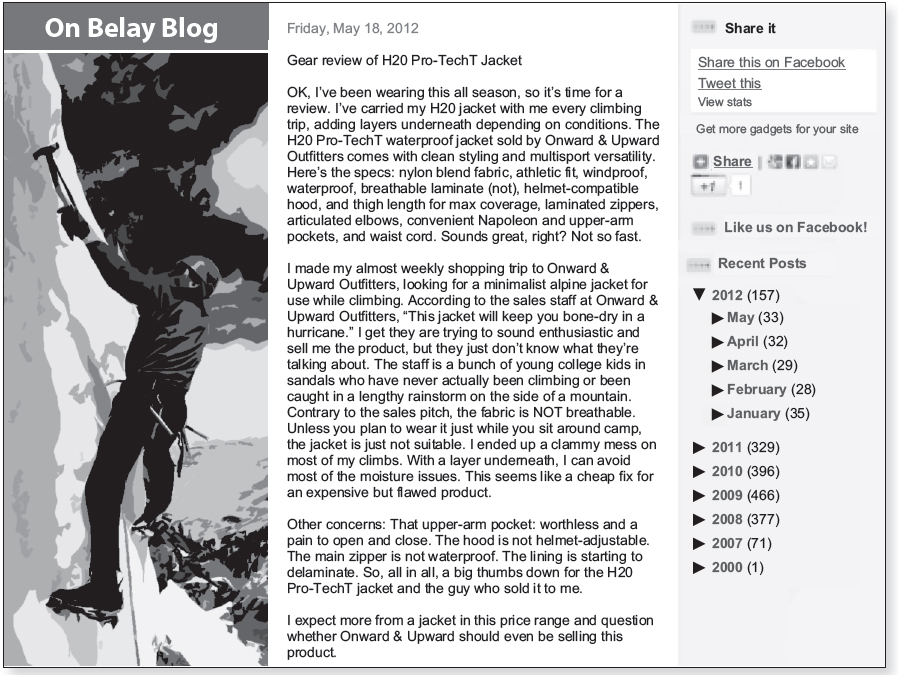
When You’re Finished
Reflecting on This Case In a 250- to 500-word response to your instructor, discuss (a) what you learned from this case, (b) how you could relate this case to work situations you will face in your chosen career, and, if applicable, (c) the ways in which this case compares to similar situations you have already faced at work. Your instructor will tell you whether your response should be submitted as a memo, an email, or a journal entry, or in a different format.
Moving beyond This Case In small groups, brainstorm a list of instances in which group members purchased a defective product or received poor service. Then choose one of these instances and work together to write either a polite, reasonable claim letter or a blog post designed to attract the attention of a company representative and get the problem resolved.